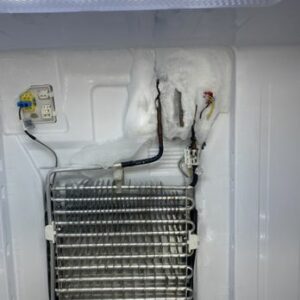A functioning stove is an essential appliance in any kitchen. Whether you’re cooking a simple meal or preparing a feast, a stove is relied upon to provide the heat needed to cook food properly. There are different types of stoves available, including gas stoves, electric stoves, and induction stoves. Each type has its own set of advantages and disadvantages, but they all serve the same purpose – to provide heat for cooking.
Identifying and addressing stove problems promptly is crucial to ensure that your stove continues to function properly. Ignoring or neglecting stove issues can lead to further damage and potentially dangerous situations. It’s important to be aware of the signs of common stove problems so that you can take action as soon as possible.
Key Takeaways
- Common stove problems can range from faulty igniters to uneven heating.
- Signs of a faulty stove igniter include a clicking sound but no flame, or a weak flame.
- Symptoms of a malfunctioning gas stove burner include uneven flames or no flames at all.
- Issues with the electric stove coil can be identified by visible damage or a lack of heat.
- Uneven heating on a stove can be caused by a variety of factors, including burner size and placement.
Signs of a Faulty Stove Igniter
The igniter is an important component of a gas stove. It is responsible for igniting the gas and creating a flame that heats the burners. When the igniter is faulty, it can cause several issues with your stove.
One common sign of a faulty igniter is a clicking sound when you try to light the burner. This clicking sound indicates that the igniter is trying to ignite the gas but is not successful. Another sign is when there is no flame or a weak flame when you turn on the burner. This can be caused by a worn-out or broken igniter.
Addressing a faulty igniter promptly is important because it can lead to further damage and safety hazards. If the igniter is not working properly, gas can build up in your kitchen, posing a risk of fire or explosion. It’s best to call a professional to repair or replace the faulty igniter as soon as possible.
Symptoms of a Malfunctioning Gas Stove Burner
Gas stove burners are responsible for providing the heat needed for cooking. When a burner malfunctions, it can cause inconvenience and safety hazards.
One common symptom of a malfunctioning gas stove burner is an uneven flame. If the flame is higher on one side of the burner than the other, it can result in uneven cooking. Another symptom is when there is no flame at all when you turn on the burner. This can be caused by a clogged or faulty gas valve.
Addressing burner issues promptly is important for safety reasons. A malfunctioning burner can release gas into your kitchen, which can be dangerous if it ignites. It’s important to have a professional inspect and repair the burner to ensure that it is functioning properly.
Identifying Issues with the Electric Stove Coil
Electric stove coils are another common type of stove found in many kitchens. These coils heat up when electricity passes through them, providing the heat needed for cooking.
Common issues with electric stove coils include uneven heating and coils not heating up at all. Uneven heating can result in food being cooked unevenly, while coils that don’t heat up can render the stove useless.
Addressing coil issues promptly is important for safety reasons. If a coil is not heating up properly, it can indicate an electrical problem that could potentially lead to a fire. It’s best to have a professional inspect and repair the coil to ensure that it is functioning safely.
Understanding the Causes of Uneven Heating on a Stove
Uneven heating on a stove can be frustrating and can result in food being cooked improperly. There are several factors that can cause uneven heating on a stove.
One common cause is a faulty burner. If the burner is not distributing heat evenly, it can result in hot spots and cold spots on the cooking surface. Another cause can be a dirty stove. Food debris or grease buildup on the burners or coils can interfere with heat distribution.
Addressing uneven heating promptly is important for cooking purposes. If your stove is not heating evenly, it can result in food being undercooked or overcooked. It’s best to clean the stove regularly and have any faulty burners or coils repaired or replaced.
Troubleshooting a Stove that Won’t Turn On

A stove that won’t turn on can be a frustrating problem to deal with. There are several reasons why a stove may not turn on, and troubleshooting the issue can help identify the cause.
One common reason is a power outage. If your stove is not receiving power, it will not turn on. Checking the circuit breaker or fuse box can help determine if a power outage is the cause. Another reason could be faulty wiring or a malfunctioning control panel.
To troubleshoot a stove that won’t turn on, start by checking the power source. Ensure that the stove is plugged in properly and that there is power to the outlet. If there is power, but the stove still won’t turn on, it’s best to call a professional to inspect and repair the issue.
How to Fix a Stove with Inconsistent Temperature Control
Inconsistent temperature control on a stove can make cooking a challenge. There are several reasons why a stove may have inconsistent temperature control, and fixing the issue can help ensure that your food is cooked properly.
One common reason is a faulty thermostat. If the thermostat is not accurately reading the temperature, it can result in inconsistent heating. Another reason could be a dirty stove. Food debris or grease buildup on the burners or coils can interfere with temperature control.
To fix a stove with inconsistent temperature control, start by cleaning the stove thoroughly. Remove any food debris or grease buildup from the burners or coils. If the issue persists, it’s best to have a professional inspect and repair the thermostat or any other faulty components.
Dealing with a Stove that Produces Smoke or Foul Odors
A stove that produces smoke or foul odors can be a cause for concern. There are several reasons why a stove may produce smoke or foul odors, and addressing the issue promptly is important for safety reasons.
One common reason is a dirty stove. Food debris or grease buildup on the burners or coils can result in smoke or foul odors when the stove is turned on. Another reason could be a faulty burner. If the burner is not igniting properly, it can result in gas buildup and produce smoke or foul odors.
To address a stove that produces smoke or foul odors, start by cleaning the stove thoroughly. Remove any food debris or grease buildup from the burners or coils. If the issue persists, it’s best to have a professional inspect and repair any faulty components.
Common Problems with Stove Oven Functionality
The oven functionality of a stove is essential for baking and roasting. There are several issues that can arise with a stove oven, and addressing them promptly is important for cooking purposes.
One common issue is uneven heating. If the oven is not distributing heat evenly, it can result in food being cooked unevenly. Another issue could be a faulty thermostat. If the thermostat is not accurately reading the temperature, it can result in inconsistent heating.
To address common stove oven problems, start by cleaning the oven thoroughly. Remove any food debris or grease buildup from the oven racks and walls. If the issue persists, it’s best to have a professional inspect and repair any faulty components.
Tips for Preventing Future Stove Problems
Preventing future stove problems is important to ensure that your stove continues to function properly. There are several ways to prevent stove problems and ensure that your stove remains in good working condition.
Regular cleaning is one of the most important steps in preventing stove problems. Clean the burners or coils regularly to remove any food debris or grease buildup. Additionally, clean the oven racks and walls to prevent any buildup that could interfere with heat distribution.
Proper use of the stove is also crucial in preventing problems. Avoid using the stove for purposes other than cooking, and avoid placing any objects on the stove that could interfere with heat distribution.
Regular maintenance is another important step in preventing future stove problems. Have a professional inspect and service your stove regularly to ensure that all components are functioning properly.
In conclusion, a functioning stove is essential in any kitchen. Identifying and addressing stove problems promptly is important to ensure that your stove continues to function properly and to prevent safety hazards. By being aware of the signs of common stove problems and taking action as soon as possible, you can keep your stove in good working condition and enjoy hassle-free cooking.
If you’re experiencing issues with your stove, it’s important to understand the symptoms and signs that can help you identify the problem. In our article on Decoding Common Stove Problems: Symptoms and Signs, we provide valuable insights into troubleshooting common stove issues. However, if you’re looking for more information on appliance repair services, we recommend checking out 911 Appliance’s website. They offer a range of services to help fix your appliances and ensure they are running smoothly. You can find more details about their services by visiting their services page.
What are the common signs and symptoms of stove problems that I should be looking out for?
When diagnosing stove issues, fix problems like uneven heating, gas odors, or strange noises. Look out for malfunctioning burners, faulty igniters, or overheating. These common signs and symptoms could indicate potential stove problems that need prompt attention to avoid potential safety hazards. To address these issues effectively, follow a stepbystep stove troubleshooting process that helps you identify and resolve each problem systematically. Begin by checking the power source or gas supply, ensuring everything is functioning as it should. Regular maintenance and prompt repairs can significantly extend the lifespan of your stove and improve its overall performance.
What are Common Symptoms of Stove Problems that Could Lead to It Not Turning Off?
If your stove won’t turn off, it could indicate several problems. Common symptoms include the burner not responding to the controls, the burner staying on at high heat, or the stove not turning off after reaching the desired temperature. Contact a professional to diagnose and fix the issue.



